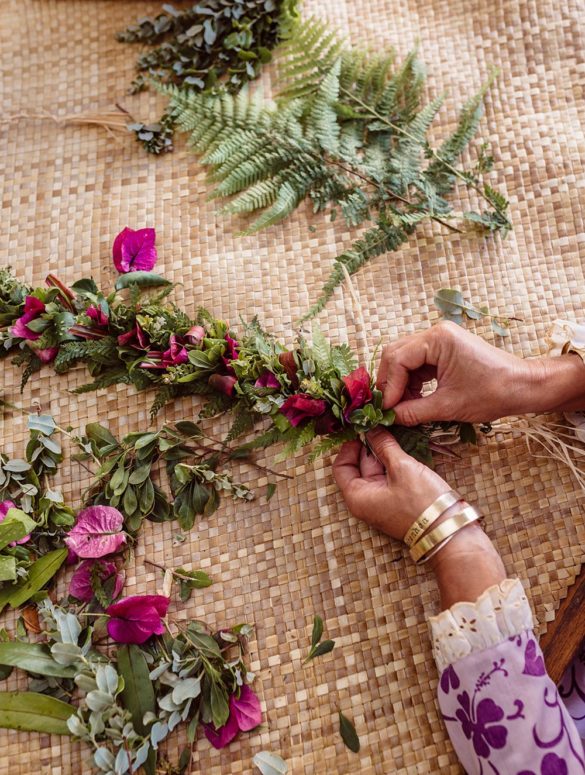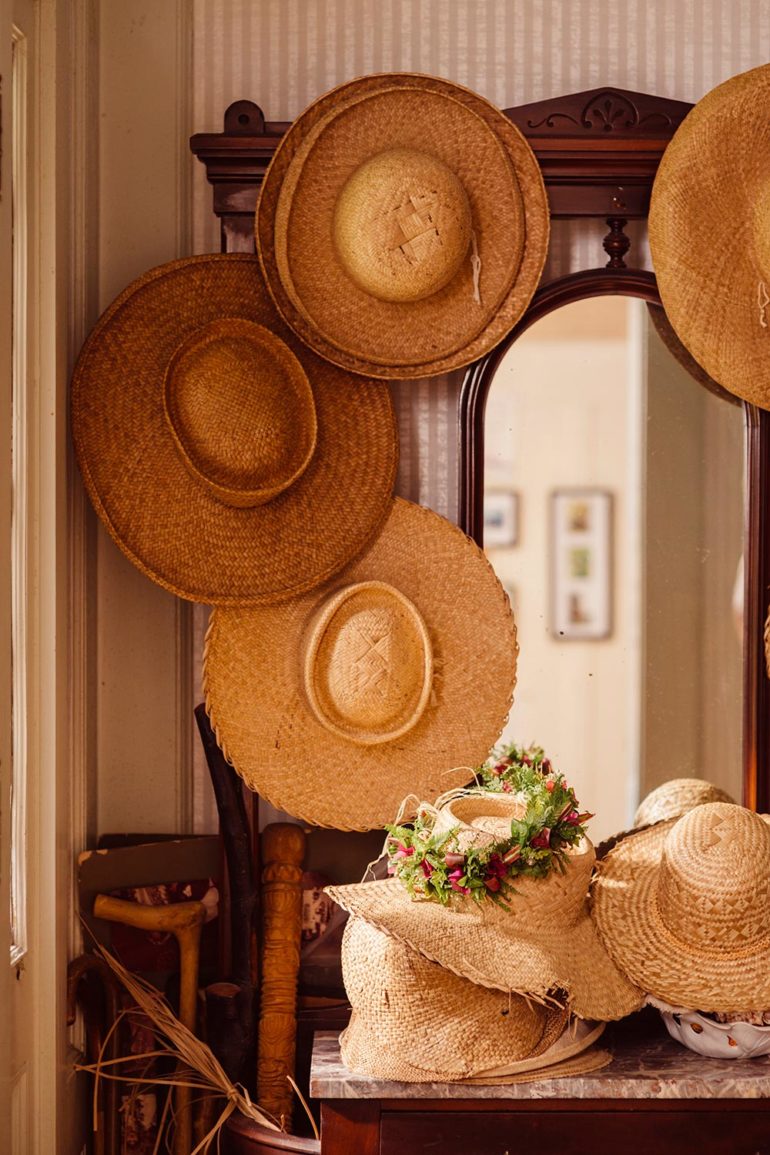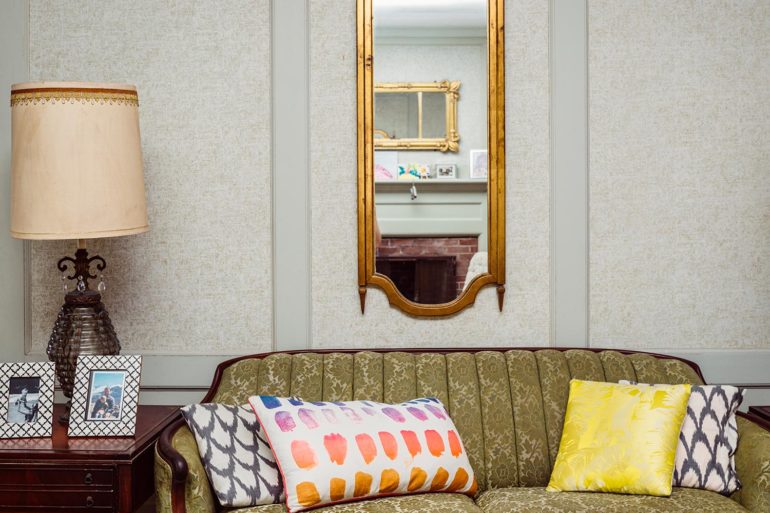When designer and lei maker Meleana Estes thinks of the historic house she shares with her husband and son in Mānoa Valley, she thinks of her grandmother. Amelia Ana Kaopua Bailey, herself a renowned haku lei maker, raised all of her children in that home and lived there until she passed away in 2012. Estes inherited the house and, with it, her tūtū’s passion for lei making and the lush garden from which she sourced her florals.
The stately 100-year-old home sits back from the street, unassuming behind a fragrant grove of puakenikeni trees. The front yard is a riot of green: ti leaves and palapalai ferns vie for space among anthuriums and magnolia. From it, Estes often uses silvery Pele’s hair (Spanish moss) and her favorite, liko, the leaf of the native ‘ōhi‘a lehua tree.
“I’ve been making lei since I was pretty young,” Estes says. “I would sit with tūtū and talk and clean and arrange flowers.” Though she had the skill to do so, Estes didn’t have the patience for lei making when she was a child. “It wasn’t until after college that it became a calling to me,” she explains. “Especially after tūtū passed and I moved into her home and had all the materials at my fingertips because she grew her garden for her lei. Everything was right there, so I felt even more compelled to make lei.”
Bailey, who grew up in a time when Hawaiian culture wasn’t embraced, didn’t learn how to make lei po‘o (head lei) until her 50s, when she was asked to judge Honolulu’s annual May Day lei competition. It was then that she threw herself into learning everything she could about the craft, going on to become one of the most respected lei makers on the island. Needless to say, making and giving lei was an important part of Estes’ upbringing. “I was blessed to learn the art at a really young age, and my family made lei for so many occasions,” she says. No birthday was celebrated or graduation commemorated without florals in tow. It is this tradition—a true embodiment of the aloha spirit—that Estes feels is her kuleana (responsibility) to carry on.
Brimming with influences from both Estes and her tūtū, the inside of the Mānoa home is an eclectic mix of old and new, muted and bright, colonial and Hawaiian: Polynesian portraits, woven hats and clusters of shell lei, an antique chintz sofa piled with neon pillows, textiles from Tahiti, mementos from Mexico. Every corner is a smorgasbord for the senses.
So, too, are the haku lei that Estes makes. While she learned the traditional Hawaiian techniques of haku (to braid) and wili (to wind), she is also inspired by all the creative possibilities of her floral palette. “I’m a hugely color-driven person with a fashion background,” she says. “That’s the fun part, my color creation and putting these beautiful colors together, even if it’s all green. It’s the architecture of a lei, too—all the elements of flowers and ferns—that really add to a lei.”
These days Estes is busier than ever, making lei for special events, photoshoots, and international clients. You can often find her running one of her popular lei-making workshops clad in one of her tūtū’s brightly colored vintage mu‘umu‘u, a big grin on her face as she deftly weaves together flora grown, bought, and foraged, overflowing with her grandmother’s passion and aloha spirit.







